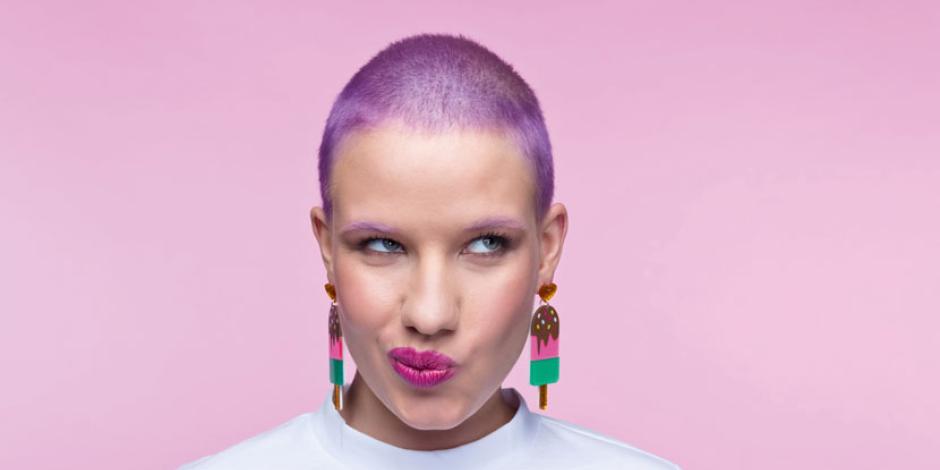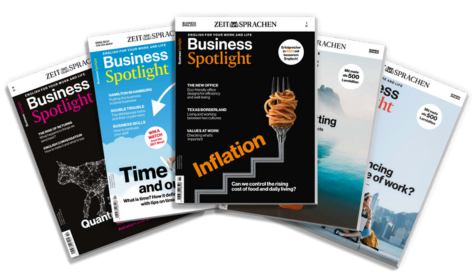Was it really planned this way? When LinkedIn got started in Mountain View, California, in May 2003, the five creators of the online platform couldn’t possibly have known how much they would to capture sth.etw. einfangencapture the zeitgeist with their invention almost 20 years later.
Officially, LinkedIn is called a social network. That doesn’t do to do sth. justiceetw. gerecht werdenjustice to its potential. The platform can be understood as a global, digital trade fairMessetrade fair and can be used that way — one with well over 800 million registered users (as of April 2022), more than 18 million of them in the DACHDACH (Deutschland, Österreich, Schweiz)DACH region. This means that about one in three professionalFachkraftprofessionals in German-speaking countries has a profile. Across the globe, 65 million decision makers are on Linked-In, all of whom can be reached from the comfort of one’s own home — without any need to fly or worry about contact or travel restrictions.
Thanks to the many tracking(Nach-)Verfolgungtracking possibilities, the benefit for a company, but also for individuals, is measurable, which allows efficient and targetedzielgerichtettargeted work. This is why it can be proven that, worldwide, six employees find a new job every minute via the platform. Above all, LinkedIn is a gigantic leverHebellever to maximize reach, as well as a valuable address book, which makes it possibly the most important tool for business professionals, especially in the B2B (business to business)Geschäfte zwischen UnternehmenB2B sector.
In short, those who recognize LinkedIn’s potential can to set oneself apart from sb./sth.sich von jmdm./ etw. abhebenset themselves apart from the competitionKonkurrenzcompetition and gain a competitive advantage. In particular, not many industryhier: Brancheindustry leaders have yet recognized the possibilities of personal brandingAufbau und Vermarktung einer Eigenmarkepersonal branding — even though, with enough expertiseSachkompetenzexpertise, it is relatively easy to gain the trust of the relevant targetZieltarget group and become an opinion leader in one’s own industry, possibly even worldwide.
How to gain the trust of your target group
1. Know your market! That sounds logical, but, looking closer, it involves a lot of researchForschung, Recherche(n)research. The point is to understand how well represented your industry already is on LinkedIn. This includes a proper analysis of what competitors and role models (and even
anti-role models) are doing online.
Experience shows that you don’t have to to reinvent the wheeldas Rad neu erfindenreinvent the wheel, but you often have to optimize it, so that it rolls faster than those of your competitors. This means being inspired by successful profiles while learning from other people’s mistakes.
2. Know your target group! Again, this seems obvious, but it’s something that’s easily underestimated. Particularly in the digital world, people’s attention spanAufmerksamkeitsspanneattention span is sometimes very limited. That makes it all the more important to find out what to resonate (well) with sb./sth.bei jmdm./etw. Anklang findenresonates well with your target group. What’s often liked, commented on, maybe even shared? And, above all, why are these things well received?
Often, there’s even a way to to engage with sth.mit etw. interagierenengage with the target group on a personal level. You just have to pay attention to what you have in common and then communicate this to the outside world in the form of posts. common groundGemeinsamkeit(en)Common ground creates a lot of trust.
Before your personal brandEigen-, Ich-Markepersonal brand is ready to go, of course, your own profile must be to polish sth. to a high glossetw. auf Hochglanz polieren; hier: bestmöglich präsentierenpolished to a high gloss — it is your digital business card. In any case, many people are shocked by how quickly their LinkedIn profiles can be found. Or they google their name and see how many direct links their accounts have had. It’s probably in the top seven, and maybe even at the top.
The trick is to create an invitinghier: ansprechendinviting profile page without filling it with excessive text. Sometimes, less really is more, as long as the essentials are included. This is where understanding your target group comes into play: the more of their interests appear, the more common ground is to reveal sth.etw. offenlegen, (auf)zeigenrevealed and the more comfortable they feel. And visitors will be to be receptive to sth.für etw. empfänglich seinreceptive to (good) content.
Who decides what “good” content is?
The target group decides — but at this point, you (hopefully) already know what they find good. The art of writing content is to keep a clear focus in mind, to follow a central idea, at all times. Whether it’s a status update, an article, a video or even an image gallery, always keep the most important questions in mind: Why am I producing this? Who is my content for? Who should feel addressed? And what should my target group think of me?
The good thing is that anything has the potential to become content. It can be about problems familiar to the group, a project you’re working on or an exciting business encounterBegegnungencounter. The important thing is that the content must be relevant to the target group and that you don’t to deviate from sth.von etw. abweichendeviate from your message or publish content on LinkedIn that actually belongs on other platforms. Looking at the interactions, tells you if your content was really good.
Involve your target group
Always start with a joke? Not necessarily, but it’s certainly imperativeunumgänglich, gebotenimperative to end with a question. If you ask the group directly about their experiences or opinions at the end of a piece of content, you will get comments and, because of the way the algorithm works, the more people comment, the more widely the post is distributed and the more people it reaches. Above all, however, the comment function can also generate valuable discussions and even ideas for future content.
Of course, it takes time to build up a community that will be waiting for your next piece of content. So, it’s much better if there’s some variety: sometimes an explanatory video, sometimes a testimonialReferenztestimonial as a text, sometimes a nice photo. There should be relatively few limits to creativity. The most important thing is to post content regularly and make it relevant to the target group.
The power of classic media
As mentioned above, LinkedIn is a great opportunity to build trust. However, what’s even more credibleglaubwürdigcredible than presenting one’s own expertise? Having someone else do it for you! In professional circles, it may be as good as a knighthoodRitterwürdeknighthood if, for example, the Handelsblatt writes an article about you. That’s why it’s worthwhilelohnenswertworthwhile to have journalists in your own contact list, to cultivate these relationships — at some point, your expert opinion on a topicThematopic may be in demand. But that’s only possible if you’re present in the minds of media people as an opinion leader in your field.
LinkedIn is an opportunity for this because the traditional barriers to the media have almost disappeared. Relevant people can be contacted directly via the platform, and if an interesting conversation takes place with or about you, this is also excellent content for your next post.
Standstill is a step backwards
There’s no doubt that LinkedIn has immense potential. However, as is often the case in business, it’s also important to question oneself constantly, to analyse and improve oneself. LinkedIn offers valuable tools for tracking content and activities. What went well? What didn’t? And why? Which people interacted with you? Who do you want to interact with more?
With the existing metricKennzahl, Messgrößemetrics, it’s easy to optimize what’s good and improve what can be improved. standstillStillstandStandstill means you risk being overtaken by ever-increasing competition. Almost 20 years after Linked-In began, more and more users are beginning to understand what it can do.
LinkedIn...
- went live on 5 May 2003
- is the world’s largest professional network
- was bought by Microsoft in 2016, adding the power of a global cloud provider
- has its headquartersSitz, Zentraleheadquarters in Sunnyvale, California
- has about 25,000 employees, including those in subsidiaryNiederlassungsubsidiaries
Avoid basic mistakes on social media
By Richard Mote
“Don’t to screw (sth.) upetw. vermasselnscrew up!” was the instruction I got from my boss in my first job, as a young social media manager. Although not very detailed, this was (and still is) good advice.
Over the years, I’ve developed a few helpful strategies to avoid making mistakes when posting content on social media, which I’d like to share with you here.
The first rule is (or should be) think before you post! If possible, never publish under pressure. The risk of writing something that’s inaccurate or misleading is much too high.
The same rule applies to answering comments. And, especially if you’re posting on behalf ofim Namen vonon behalf of an employer, remember that false or misleading content on social media can have the same legal consequences as in any other form of media.
That being said, you should always be yourself. All content on social media should have one thing: authenticity. And include a call to actionAufforderung zum Handelncall to action so readers will like, comment and share.
Use relevant keywords that to appeal to sb.jmdn. ansprechenappeal to your audiencePublikumaudience and provide search engines with information about your topicThematopic. Keywords and hashtags make it easier for others to find your post.
And finally, while a picture should be eye-catchingins Auge springendeye-catching, it also needs a relevant captionBildunterschriftcaption (again, including keywords) to make clear why it’s there.
Neugierig auf mehr?
Dann nutzen Sie die Möglichkeit und stellen Sie sich Ihr optimales Abo ganz nach Ihren Wünschen zusammen.



